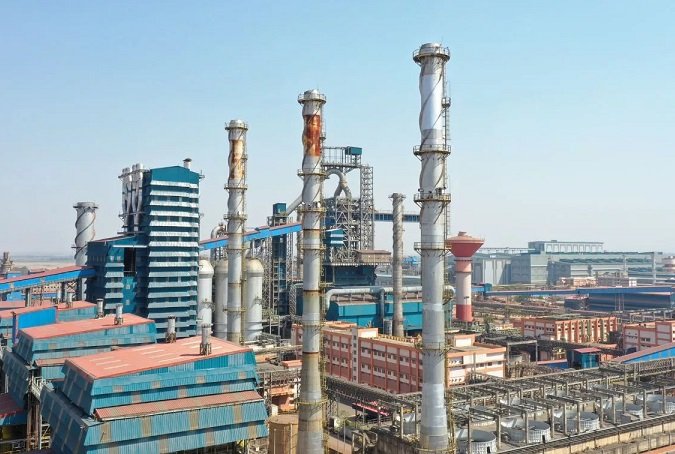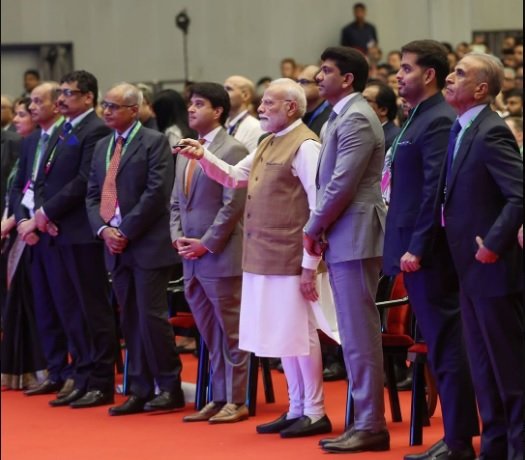Last Updated on April 28, 2025 10:19 am by BIZNAMA NEWS
R. Suryamurthy
While official figures released today indicate a marginal uptick in India’s industrial production to 3.0 percent in March 2025, a closer examination of the data reveals a more nuanced and concerning economic landscape. This seemingly positive headline masks underlying weaknesses and a significant deceleration in industrial momentum for the fiscal year 2024-25, which averaged a tepid 4.0 percent, a substantial drop from the previous year’s 5.9 percent.
The modest 0.3 percentage point increase in the Index of Industrial Production (IIP) from February’s revised 2.7 percent should not be interpreted as a strong resurgence. The growth remains significantly below the 5.5 percent recorded in March 2024, highlighting a persistent sluggishness in the industrial sector.
Sectoral performance presents a mixed bag, offering further cause for concern. While the electricity sector exhibited a robust 6.3 percent expansion, and manufacturing managed a 3.0 percent increase, the meager 0.4 percent growth in the mining sector acted as a significant drag. This uneven performance underscores a lack of broad-based industrial dynamism.
A deeper dive into the manufacturing data reveals that while 13 out of 23 sub-sectors showed positive growth, the reliance on specific segments like basic metals, automotive, and electrical equipment suggests a narrow base for expansion. The impressive growth in these areas might be attributed to specific cyclical factors or inventory build-up, as suggested by some analysts, rather than a fundamental strengthening of overall demand.
The use-based classification provides a more telling narrative of the underlying economic challenges. The strong growth in infrastructure/construction goods (8.8%) is likely driven by sustained government capital expenditure, a crucial but potentially finite stimulus. Similarly, the 6.6 percent growth in consumer durables, while positive, needs to be viewed in the context of a significant contraction of 4.7 percent in consumer non-durables. This divergence strongly indicates a persistent weakness in broad-based consumption, particularly in essential goods, which typically reflect the health of mass-market demand, especially in rural areas.
Experts offered varied perspectives on the data. Rajani Sinha, Chief Economist at CareEdge, noted the marginal improvement in March but highlighted the slower overall growth in FY25. She pointed to inventory accumulation in manufacturing ahead of potential tariff announcements and the uneven domestic demand landscape, with recovering rural demand contrasting with lagging urban consumption.
Madan Sabnavis, Chief Economist at Bank of Baroda, described the 3% growth as “quite subdued” compared to the previous year. He emphasized the significant impact of the de-growth in the consumer non-durable segment on the overall IIP. While infrastructure and capital goods showed steady performance, he cautioned about the potential impact of a new tariff environment on exports.
Sankar Chakraborti, MD & CEO of Acuité Ratings & Research Limited, echoed the sentiment of a modest recovery in March, driven by electricity and infrastructure goods. He also flagged the continued weakness in consumer non-durables and the overall slower industrial growth in FY25, emphasizing the need for stronger consumption and private investment.
Aditi Nayar, Chief Economist at ICRA Ltd, suggested that the slightly lower-than-forecast growth in March might be due to a lower response rate associated with the earlier data release, potentially leading to larger revisions later. She also noted the offsetting trends between the electricity and manufacturing sectors’ improvement and the dip in mining growth.
Stating that the industrial hum subdued ahead of tariff hikes, Dharmakirti Joshi, Chief Economist, Crisil Limited said “export-oriented sectors such as textiles, machinery and petroleum products saw growth improve, which could be due to frontloading of shipments ahead of reciprocal tariffs kicking in. The new-age exports segments — computers and electronic products — saw growth surge (21.5% vs 11.2%), again likely due to frontloading.”
“The impact of tariff hikes, uncertainty on such changes and slowing global growth is likely to weigh on manufacturing activity in the coming months. Exports and investment demand are likely to be affected the most. However, domestic policy is likely to support growth as the income tax cuts come in force this fiscal and Reserve Bank of India continues with rate cuts. Another year of normal monsoon, and lower crude prices will also cushion the impact of external headwinds,” he added.
The marginal increase in industrial production in March offers a superficial sense of improvement. However, the significant deceleration in annual growth for FY25, coupled with the concerning contraction in consumer non-durables and the subdued growth in capital goods, points towards underlying structural weaknesses in the Indian economy. While government-led infrastructure spending provides crucial support, a sustainable and broad-based industrial recovery hinges on a significant revival in both urban and rural consumption and a more robust pick-up in private sector investment. The evolving global trade landscape adds another layer of uncertainty that could further impede industrial growth in the coming fiscal year. A more granular and critical analysis of demand-side factors and investment drivers is essential to accurately assess the true trajectory of India’s industrial economy.




